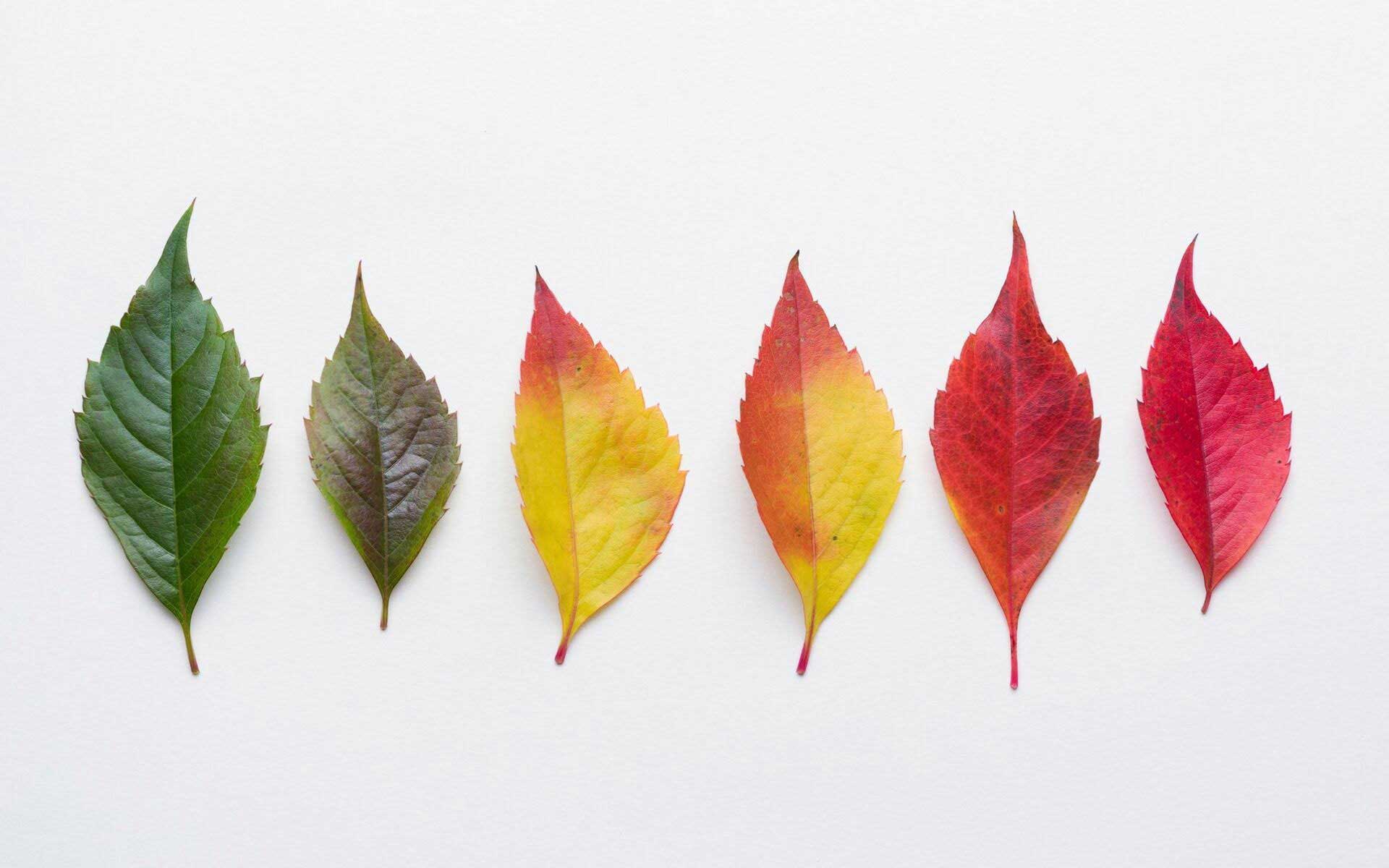As the days grow shorter and the evenings cooler, leaves begin their spectacular show of color. So why do leaves change color in autumn? The short answer is that it has to do with a pigment called chlorophyll and the process of photosynthesis.
Chlorophyll is what gives leaves their green color and helps them convert sunlight into food for the tree. But as daylight hours grow shorter in autumn, trees begin to produce less chlorophyll. At the same time, they are continuing to produce carotenoids, another type of pigment found in leaves.
Carotenoids are yellow or orange, and when they mix with chlorophyll, they create the warm hues of autumn foliage.
As the days grow shorter and the nights get cooler, the leaves on trees begin to change color. Why leaves change color in autumn is a result of several factors.
One reason is that as the days get shorter, there is less sunlight for the leaves to absorb.
This causes the green chlorophyll in the leaves to break down, revealing other colors that were hidden before.
Another reason why leaves change color is because of a decrease in temperature. As the temperature outside begins to drop, chemical reactions take place inside the leaves that cause them to change color.
So when you see those beautiful red and yellow leaves this fall, know that it’s nature’s way of getting ready for winter!
Why Do Leaves Change Color in the Fall Experiment
We all know that leaves change color in the fall, but have you ever wondered why? It’s actually a pretty fascinating process. Here’s a quick explanation.
As summer comes to an end and days become shorter, the amount of sunlight that leaves receive decreases. At the same time, temperature changes cause the production of chlorophyll (the green pigment in leaves) to slow down. As chlorophyll production decreases, other pigments in the leaf, like carotene (yellow) and anthocyanin (red), begin to show through.
So what causes those beautiful red and purple leaves? That would be anthocyanin! This pigment is produced when sugar accumulates in the leaf during periods of low light intensity and cool temperatures.
Maple trees are especially good at producing anthocyanins.
So there you have it! The next time you see some stunning fall foliage, remember that it’s the result of a decrease in chlorophyll production and an increase in other pigments.
And if you’re lucky enough to see some red or purple leaves, you can thank anthocyanins for those!

Credit: my.spokanecity.org
Why Do Leaves Turn Red in Autumn?
As the days grow shorter and cooler, the green chlorophyll in leaves begins to break down. carotenoids, which were hidden by the chlorophyll, begin to show through and give autumn leaves their characteristic yellow, orange, and red colors.
When fall evenings bring frosty temperatures, another change takes place in the leaf that causes its color to intensify.
The cells that produce and store energy in the form of carbohydrates begin to break down, releasing sugars into the leaf. These sugars combine with other molecules in the leaf to produce anthocyanins—red and purple pigments that are responsible for some of the most brilliant fall colors.
Why Do the Leaves Change Color?
As the days grow shorter and the nights cooler, the chlorophyll in leaves begins to break down. Chlorophyll is what makes leaves appear green and is essential to the process of photosynthesis, which helps plants convert sunlight into food.
As chlorophyll breaks down, other pigments in the leaves are revealed.
These include carotenoids (yellow and orange colors) and anthocyanins (red and purple). The pigments are actually present in the leaves all along, but they are masked by chlorophyll during the growing season.
The amount of each pigment that is produced by a tree depends on its species.
For example, maples produce more anthocyanins than oaks. And within a species, individual trees can vary in pigment production from year to year depending on weather conditions during the autumn months.
Soil type can also affect leaf color.
For instance, anthocyanins are more prevalent in blueberries than blackberries because their roots absorb aluminum ions from acid soils more readily thanblackberry roots do. This difference is reflected in the fruits as well as the leaves of these plants.
When light reflects off these differently colored pigments, we see a spectrum of colors ranging from yellow to red to purple.
Conclusion
As the days grow shorter and the temperatures begin to drop, leaves all over the world start to change color. Many people think that leaves change color because of a decrease in temperature, but that’s not entirely true. So, why do leaves change color?
It’s all thanks to a process called photoperiodism. Photoperiodism is the way plants respond to changes in daylight. In autumn, there are fewer hours of daylight and more hours of darkness.
This triggers a hormonal response in plants that causes them to produce more chlorophyll.
Chlorophyll is what gives leaves their green color. It’s also responsible for helping plants convert sunlight into energy (aka photosynthesis).
As chlorophyll production increases, so does the green pigment in leaves.
But as fall progresses and daylight hours continue to decrease, chlorophyll production starts to slow down. Without chlorophyll, other pigments that were always present in the leaf become visible.
These pigments include carotenoids (yellow and orange colors) and anthocyanins (red and purple colors).
So basically, as chlorophyll breaks down at the end of summer/beginning of fall, these other pigments take over and give leaves their stunning autumnal hues!
